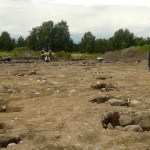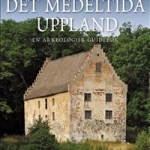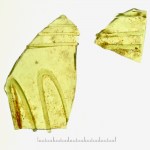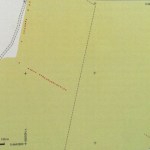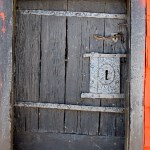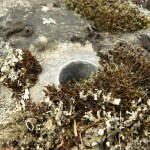archaeology
My landscape students in Växjö did extremely well on the exam: 79% passed with distinction. And they were extremely kind in their evaluation of the course, which took place before the exam.
I've been put in charge of an on-line course in upplevelseproduktion, tourist site production, and so will spend the entire academic year of '12/13 as an employee of the Linnæus University at 20-25% of full time. Yay!
My buddy Martin is sending me the manuscript of his new novel for test reading.
Fornvännen's autumn issue just came from the printers with a lot of good stuff, and we're handing the winter…
My dynamic friend and colleague Frans-Arne Stylegar has managed to liberate a respectable sum of Norwegian oil money to fund a collaboration with Ukrainian archaeologists under the direction of professor Igor Khrapunov. The first results of this collaboration have been two international conferences on the theme “Between Two Seas. Northern Barbarians From Scandinavia To The Black Sea”. I was kindly invited to take part in the second one, at the beach resort of Gaspra near Yalta on Crimea's Black Sea coast, from which I now report to you, Dear Reader.
The reason that scholars in Ukraine and…
A few weeks ago my friend Tobias Bondesson and his fellow amateur detectorists Iohannes M. Sundberg and Tommy Olesen found a 3.5 kg silver and gold hoard from the 5th century AD near Roskilde in Denmark. They reported their find to the town museum, the hoard was lifted by experts and excavations are ongoing. This closed find, consisting of ~1500 pieces of metal and the pot in which they were buried, is of immense value to archaeology and numismatics thanks to the snapshot of coeval objects it gives us. This not just bullion: many of the objects are typologically distinct. I'd love to help…
Yesterday I went to Öland and showed my students some sites and landscape. We were joined by human geographer Carl-Johan Nordblom who knows all the post-Viking stuff. Lovely day! Though we couldn't find our way to the best-preserved of the Resmo passage tombs. The land owner has tired of visitors and closed off the driveway from the main road.
My ride Stockholm-Kalmar was a fun little flying school bus, the Swedish 1983 design SAAB 340, seating 34 people. I had a great view when we flew back north in the sunset, golden horizontal lighting bringing out the surface contour.
There was a little…
My cousin Annika kindly forwarded me this postcard from a budding archaeologist just out of high school and on his first dig. I translate:
*
Hazor-Haglilit July 15th, 1990, 12:05 [Sunday]
Shalom!
Mainly I'm digging. At the same time we exchange some language teaching – my new Israeli acquaintances call each other “whitstevell” in passing [Sw. skitstövel, “shit boot”] (think about it and you'll get it...), and I've learned things like makush (hoe), makushon (small hoe), benga benga (work, work!), yalla (faster!), malofofon (cucumber), and ma-eem (water).
I've got today off, and I have the…
Martin Carver in the editorial to the current issue of Antiquity:
If the PhD is an apprenticeship, why does it include no formal training in fieldwork—our method of recovering primary data? Quite apart from the fact that the world is already full of academics who don't know how to dig (but think they do), not every doctoral student is destined for a job in a university. The commercial sector, as archaeology's largest employer, needs their talents too—but it would help if they were trained. Six months in the field, out of 36 months in a library, strikes me as a minimum (leaving 30 months to…
Here's an interesting legal conundrum. The pseudo-archaeological power duo Bob Lind and Nils-Axel Mörner have been excavating without a permit again (as confirmed to me by the County Archaeologist). But the site they have chosen is a disused quarry of indeterminate age. Though protected by the letter of the current law, such a humble and probably not very old site would not in practice receive the full treatment afforded e.g. a prehistoric settlement site.
However...
Lind and Mörner claim that the quarry dates from the Bronze Age. So they have dug into a site they believe to be legally…
Tomas Romson asked me a good question. Why do archaeological layers form in such a way that older things end up buried below newer ones? The answer is, because people and natural processes deposit dirt on the ground. Using a word borrowed from geology, we call the study of such layers stratigraphy.
Imagine a Neolithic family who build a house on virgin land and live there for some decades. At the end of this phase there are a number of stinky middens and remains of the house on the site. These materials get compacted by microbial activity and mucked around by wildlife, and eventually form a…
Yesterday Jrette, her buddy and I went down to Ströja in Kvillinge outside Norrköping and had a look at the mead-hall excavation I've blogged about. Arkeologikonsult's Björn Hjulström very kindly showed us around. The site will become an Östergötland classic, not only for the 6th century manor hall but also because of its long habitation continuity and for the keen appreciation its excavators have for stratigraphy. I saw hachured plans that would make British urban archaeologists proud.
The excavation is caused by and funded through a planned road widening and railroad improvement which are…
I have four pleasant things on my desk at the moment:
Finally my first uni job! Humble but very important to me. I've been asked to teach Swedish landscape archaeology to exchange students in English for about 100 hours during the autumn term. Start 4 Sept.
A commission for an encyclopedia article on Viking gaming. Deadline 30 Sept.
A speaking slot at a conference in a Crimean coastal resort during the off-season, to talk about Swedish contacts with that area in the 4th and 5th centuries. Deadline 3 Oct.
A growing book ms. on Bronze Age sacrificial sites. Deadline 31 Dec. 2013.
What about…
Sweden's traditionally divided into 25 landskap provinces. They live on in people's minds despite having been superseded by a new län division in 1634. The boundaries of the landskap go way back into prehistory, and so they don't respect the country's cities much, these generally being much later in origin.
Stockholm is a case in point. Today's urban area is neatly bisected by the boundary between Uppland and Södermanland provinces. Two years ago myself and other Stockholmers got half of our High Medieval itches scratched by a fine archaeological guide book covering Södermanland. Now Johan…
My book Mead-halls of the Eastern Geats appeared last September. On p. 9 I wrote:
Splendid single finds, though never surveyed comprehensively, offer a rough idea of where elite settlements might be sought. But little is known about individual elite settlements in 1st millennium Östergötland. Not one of the Beowulfian mead-halls of this book’s title, being my shorthand for the ostentatious manorial buildings where the Late Iron Age elite lived their lives and played their roles, has been identified in the field. Yet they are easily recognised elsewhere through their architecture and…
Major excavations are taking place in Old Uppsala because of railway work. Old Uppsala was a political, religious and mercantile centre from about AD 600 to 1274. In fact it may be termed the central place of the Swedes – tribe and kingdom – during those centuries.
My friend, author Kristina Ekero Eriksson, is the fieldwork's outreach officer and keeps a blog. So far there hasn't been much to report beyond what you might expect on a contract excavation in the region, but now some interesting stuff is popping up. How about some long lines of regularly spaced stone-filled pits? They're in the…
Vår Gård in Saltsjöbaden is a conference venue and training centre whose history illustrates political trends in Sweden over the past century and more.
1892. The Thiel brothers, two of Sweden's wealthiest art patrons, buy a property by the sea in the new fashionable resort of Saltsjöbaden and build two luxurious summer mansions. They name the place Vår Gård, “Our Farmstead”.
1899. The Swedish Cooperative Union is founded.
1924. The Cooperative Union buys Vår Gård and adds a number of buildings to the property to house its new training centre and its art collection.
1932. Sweden's first Labour…
Following up on Saturday's entry on the bleak prospects for many UK archaeology departments, I'd like to share a remark made by a senior colleague a few years back.
All archaeological research covers a certain area of the world. What parts get covered is largely decided by 19-year-old non-archaeologists.
The mechanism is simple. For reasons of convenience and economy, most academic archaeologists study the region where their workplace is located. Regardless of any on-going research, an academic department is dependent on students for its livelihood. Therefore, if students avoid a department,…
As noted here three years ago, UK contract archaeology is in a deep slump where hundreds of archaeologists have been laid off and a number of excavation units have closed shop. Those experienced and well-connected field archaeologists who got the sack didn't evaporate: many of them are still out there waiting for the job market to improve.
Now, in Current Archaeology #268, Mark Horton (prof. arch. Bristol) warns about "an oncoming archaeological crisis in universities". After an all-time high in the 90s and mid-00s, UK archaeology student admittance numbers have declined steadily:
1996: 704…
Pastoralism is the practice of keeping and herding animals such as cattle, goats and sheep, and using the products they produce, including meat, hide, bone, horn and of course, dairy. In the old days, armchair archaeologists thought that pastoralism would have been a phase of cultural adaptation following hunting and gathering and preceding horticulture (the growing of plant crops). Why did they think that? No really good reason, just a guess. However, over time evidence came along and ideas where altered and minds were changed and now it is generally thought that in Europe and West Asia…
With Fornvännen's summer issue on its way from the printers to subscribers, we have published the full contents of last winter's issue on-line (2011:4). This is one of the rare cases where no women have contributed papers, but it's good stuff anyway.
Robin Lindblad on why axes were depicted on Bronze Age rock carvings.
Michael Schneider on the landscape / societal background to Broby place names.
Helmer Gustavson & J.O.H. Swantesson give three newish runic inscriptions with the early futhark the full philological treatment.
Andreas Wiberg & Anders Wikström on geophys mapping of a…
Today I celebrate 20 years as a professional archaeologist!
In the spring of 1992 I turned 20, completed my BA, got married and moved out of student accommodation. I was very lucky: I had immediately upon graduation gotten a four-month job on a contract dig for the Arlanda airport bullet train, conducted by the National Heritage Board's Stockholm unit and headed by Marja Mutikainen. To some extent I got the job because I had some professional experience with computers and magazine writing, but more importantly I got it because I had made a friend among the contract archaeologists at a dig…
As I've written before in a number of venues (e.g. Fornvännen and Antiquity), the current Swedish metal detector legislation needs to be changed. It is too restrictive in relation to honest amateur detectorists. It is keeping them from a) making valuable contributions to archaeological research, b) saving finds for scholarship that are slowly turning to a green verdigris powder in the country's ploughsoil, c) engaging constructively with their cultural heritage. We are decades behind the Danes on this. Metal detectors should be dealt with like hunting rifles: if a citizen passes a knowledge…



